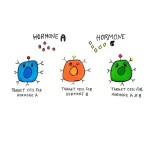Quillaya Saponaria, commonly known as Chile Soap-bark, is a homeopathic remedy that is primarily indicated for acute catarrh, sneezing, sore throat, and early stages of coryza.
It is particularly effective in the initial phases of colds, helping to prevent their further development.
This remedy is also beneficial for coughs with difficult expectoration and certain skin conditions characterized by scaling.

Table of Contents
ToggleSOURCE INFORMATION
Scientific Classification
- Kingdom: Plantae
- Order: Fabales
- Family: Quillajaceae
- Genus: Quillaja
- Species: Quillaja saponaria
Origin
- Quillaya Saponaria originates from Chile, where the Soap-bark tree, Quillaja saponaria, is native.
- The bark of this tree has been traditionally used by indigenous peoples of Chile for its soap-like properties and medicinal benefits.
- In homeopathy, the tincture of the bark is used to prepare the remedy.
Historical Facts
- The Soap-bark tree has a long history of use by indigenous peoples in Chile for its cleansing properties and as a natural remedy for various health conditions.
- In homeopathy, Quillaya Saponaria has been utilized for its therapeutic effects on respiratory and throat issues, as well as certain skin conditions.
DRUG PATHOGENESIS
- Produces and cures symptoms of acute catarrh, including sneezing and sore throat.
- Effective in the early stages of coryza, preventing its further development.
- Useful for colds accompanied by sore throat, heat, and dryness in the throat.
- Helps relieve coughs with difficult expectoration.
- Indicated for certain skin conditions characterized by scaling or squamous eruptions.
KEY CHARACTERISTICS
- Addresses acute catarrh, sneezing, sore throat, and early stages of coryza.
- Effective in preventing the progression of colds.
- Relieves sore throat with heat and dryness.
- Helps with coughs that have difficulty in expectoration.
- Beneficial for certain skin conditions with scaling or squamous eruptions.
RELATIONSHIP WITH OTHER DRUGS
- Compare with Kali hyd, Gelsemium, Cepa, Squilla, Saponaria, and Senega for similar respiratory symptoms and sore throat.
DOSE
Quillaya Saponaria is typically available in tincture and first potency.
Dosage recommendations include tincture or first potency preparations.
Frequently Asked Questions
Q: What is Quillaya Saponaria used for?
A: Quillaya Saponaria is primarily used for acute catarrh, sneezing, sore throat, early stages of coryza, cough with difficult expectoration, and certain skin conditions with scaling or squamous eruptions.
Q: Where does Quillaya Saponaria originate from?
A: Quillaya Saponaria originates from Chile, where the Soap-bark tree, Quillaja saponaria, is native.
Q: How is Quillaya Saponaria prepared?
A: Quillaya Saponaria is prepared from the tincture of the bark of the Soap-bark tree, Quillaja saponaria.
Q: What are the key characteristics of Quillaya Saponaria?
A: Quillaya Saponaria is known for its effectiveness in addressing acute catarrh, preventing the progression of colds, relieving sore throat with heat and dryness, and helping with coughs that have difficulty in expectoration.
It is also beneficial for certain skin conditions with scaling or squamous eruptions.
Meaning of Difficult Words
- Catarrh: Inflammation of a mucous membrane, especially of the respiratory tract, typically causing excessive mucus production.
- Coryza: Acute inflammation of the mucous membrane of the nasal passages, commonly known as a cold.
- Expectoration: The act of coughing up and spitting out mucus or phlegm from the respiratory tract.
- Squamous: Relating to, consisting of, or resembling scales, often used to describe skin lesions characterized by scaling.
- Tincture: A solution of a medicinal substance in alcohol or another solvent, typically prepared by maceration or percolation.













Leave a Reply